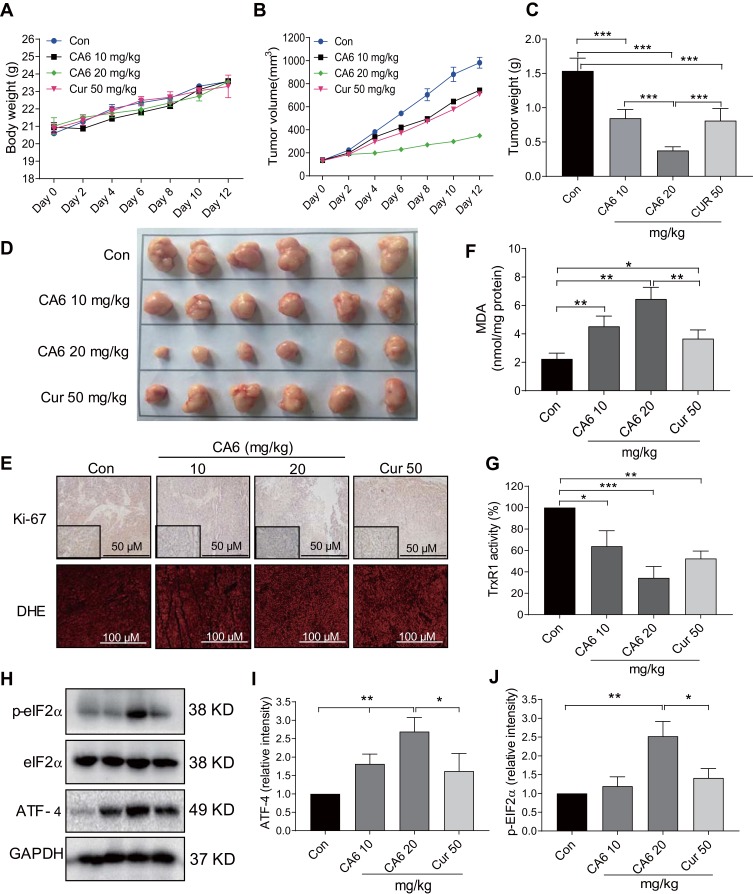Figure 6.
CA6 inhibits BGC-823 xenograft tumor growth by elevating ROS and reducing TrxR1 activity. BGC-823 cells were implanted in nude mice. Mice were then treated with CA6 (10 mg/kg or 20 mg/kg) for 12 days. Curcumin (50 mg/kg) was used as positive control. (A) Body weights of mice implanted with BGC-823 cells at indicated intervals [n=6]. (B) Tumor volumes determined at indicated time points following tumor cell injection [n=6]. (C) Measurement of tumor, harvested tumor weights on day 12 [Mean ± SEM; n=6; ***P<0.001]. (D) Images of harvested tumors from mice on day 12. (E) Staining of gastric tumor specimens for cell proliferation marker Ki-67 (top row). Ki-67 was detected using DAB chromogen staining (brown) [n = 6; scale bar = 50 µm]. Lower panel showing DHE staining (red) of tumor specimens [n = 6; scale bar = 100 µm]. (F) Measurement of oxidative stress marker MDA in tumor tissue lysates [Mean ± SEM; n=6; *P<0.05, **P<0.01]. (G) TrxR1 enzymatic activity of tumor tissue lysates as measured via endpoint insulin reduction assay [Mean ± SEM; n=6; *P<0.05, **P<0.01, ***P<0.001]. (H) Levels of ER stress-related proteins p-eIF2a and ATF4 in tumor lysates. GAPDH was used as loading control. Representative immunoblots were shown. (I, J) Densitometric quantification of ATF4 and p-EIF2α. ATF4 was normalized to GAPDH and p-EIF2α to EIF2α [Mean ± SEM; n=6; *P<0.05, **P<0.01].

